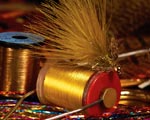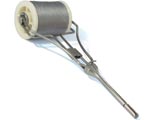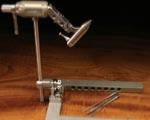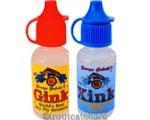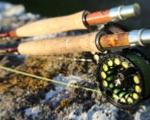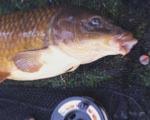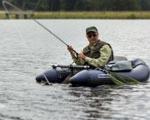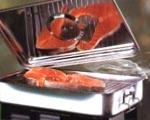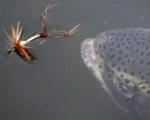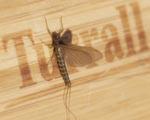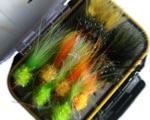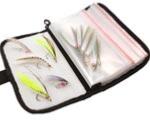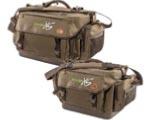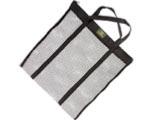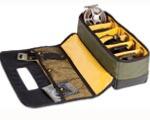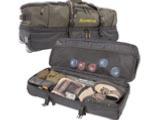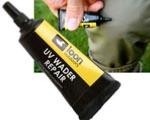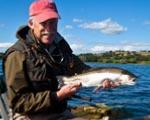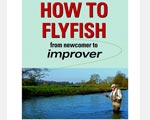01933 388281
|
|
 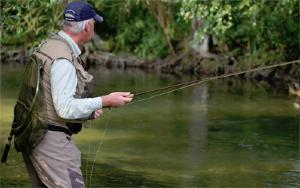 Your Fly Rod has Four Purposes!OK so the main purpose is to catch fish - but to break that down a fly rod has four purposes! getting the fly to where the fish are. Setting the hook. Fighting, and then landing a fish. Therefore deciding which rod to buy, you need to have some idea of the the type of fly fishing you are intending. Fish (Trout, Salmon, Grayling, Pike, Sea Monsters!) and your intended area of fishing (streams, brooks, reservoirs and so on) come in a huge range of sizes, no single fly rod suits all types of fly fishing! 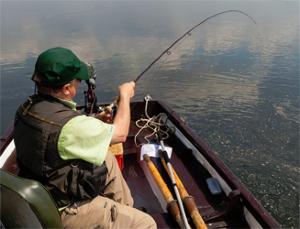 Matching Fly Lines...to your fly rod!!After deciding which fish you are going to target, this will determine the type of flies you will be using, then you need to think about the type of water you intend to fish - This could be from small brown trout in Lochs and steams in the Highlands of Scotland, to tackling those large Rainbows in a stocked reservoir, through to getting stuck in to a Marlin on the other side of the world! Pulling together many forms of information from various sources, and using your own experiences should lead you to what you need, Hopefully you will know your intended target fish, and location(s), this will then give an average 'fly size' and then it will give a guide to the 'line weight' - For example, a fly line between #4 & #8 would get you tackling, trout & grayling on small to medium rivers, through to tackling trout on larger waters, and then on to pike & salmon. A 'Very' Rough Guide for Fly Rod Length & Weight to choose.... Small Rivers - Streams – Brooks 7’-8.5’ #2 - #5 Large River 9’-10’ #4 - #6 Small Still Waters 9’-9.5’ #5 - #6 Freshwater Large Reservoirs Lochs 9.5’-10’ #7 - #8 Sea-Trout / Light Salmon / Pike / Carp 10’ #7 - #9 Flats Bonefish UK Saltwater 9’ #7 - #9 Flats Permit / Baby Tarpon 9’ #9 - #10 Big Tarpon 9’ #11 - #13 Sailfish / Big Sharks / Tuna 9’ #12 - #14 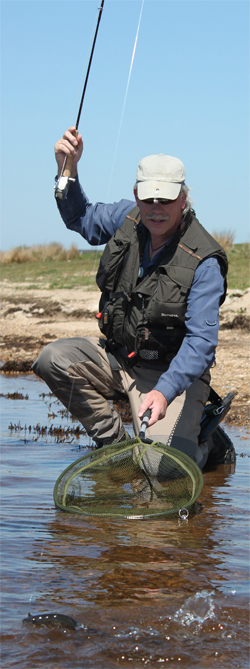 What else do I need to know before choosing my Fly Fishing Rod?The next thing to think about is the type of casting that you will be intending. Different Manufacturers describe fly rod actions in different ways, which is not the most helpful way to understand the differences! However to help break it down (not the rod - the information!) most fly rod styles can be put into one of three categories. "Through Action Fly Rods". Medium Action Fly Rods. Fast Action Fly Rods. "Through Action Rods" are described as soft, slow, and smooth. This means that they bend fairly smoothly from butt to tip. These rods are normally easier to cast because of the "feel" to the angler. They load easily with short line lengths and normally roll cast very well, and this makes them ideal for short line fly fishing in streams, brooks and any close fishing. However they do throw wider loops than the faster action fly rod types, they are not the fly rod to choose if you want accuracy or maximum distance. "Medium Rod Action Rods" are slightly stiffer than the above "through action rod". These fly rod types are a good compromise for different types of fly fishing, with a good all round performance. "Fast Action Rods" are the ultimate to get distance in your cast. If you are a beginner looking to get distance, then you will need to practice to get the best out of these fly rods to exploit the rod's full capabilities. Fly Fishers who want distance and accuracy with reservoir fly fishing or fishing large rivers, will usually choose a fast action rod. The next thing to think about is the length of fly rod. Again this will depend on the type of fly fishing you are intending to do the most. Small streams, brooks and close in fly fishing, a short fly rod between 6ft and 8ft long would normally be ideal. For general river fishing and small stillwater's, rods between 8ft and 9ft 6in are normally used. Then for the large rivers, reservoirs and so on, fly rods about 9ft to11 ft are normal. However a lot will be determined how comfortable you are with each rod size, and this will be different for each person! Our advice is to try a few different ones out with your friends before commiting! Last thing to determine is the price & quality of the fly rod. Generally, the saying goes, "you get what you pay for!" This seems to be the case when it comes to choosing a fly rod. I guess this will come down to personal budget and how serious you intend to take up the hobby! By now, you will know the AFTM rating of your chosen rod, the type and the length - You may want to think about how many joints the rod has, the less the better, but be practical, how & where will you store and transport it - what is the maximum transportation length can you get away with? (How big is your car boot space? Will you be taking it on a plane?) Then think about these joints are they designed to fit together well? What are the quality of the rings? The Butt etc. - I guess the best advice here is, get the best rod you can possibly afford, giving the most flexibility in terms of the type of fly fishing you intend to do - and purchase a fly rod that comes with a "Life Time Guarantee" for that ultimate piece of mind. 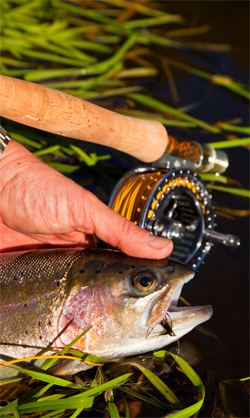 Quick Fishing Fly Rod Jargon Buster that you may come across on the troutcatcher website….
|

